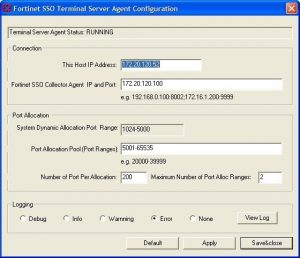FGCP High Availability
Fortinet suggests the following practices related to high availability:
- Use Active-Active HA to distribute TCP and UTM sessions among multiple cluster units. An active-active cluster may have higher throughput than a standalone FortiGate unit or than an active-passive cluster.
- Use a different host name on each FortiGate unit when configuring an HA cluster. Fewer steps are required to add host names to each cluster unit before configuring HA and forming a cluster.
- Consider adding an Alias to the interfaces used for the HA heartbeat so that you always get a reminder about what these interfaces are being used for.
- Enabling load-balance-all can increase device and network load since more traffic is load-balanced. This may be appropriate for use in a deployment using the firewall capabilities of the FortiGate unit and IPS but no other content inspection.
- An advantage of using session pickup is that non-content inspection sessions will be picked up by the new primary unit after a failover. The disadvantage is that the cluster generates more heartbeat traffic to support session pickup as a larger portion of the session table must be synchronized. Session pickup should be configured only when required and is not recommended for use with SOHO FortiGate models. Session pickup should only be used if the primary heartbeat link is dedicated (otherwise the additional HA heartbeat traffic could affect network performance).
- If session pickup is not selected, after a device or link failover all sessions are briefly interrupted and must be re- established at the application level after the cluster renegotiates. For example, after a failover, users browsing the web can just refresh their browsers to resume browsing. Users downloading large files may have to restart their download after a failover. Other protocols may experience data loss and some protocols may require sessions to be manually restarted. For example, a user downloading files with FTP may have to either restart downloads or restart their FTP client.
- If you need to enable session pickup, consider enabling session pickup delay to improve performance by reducing the number of sessions that are synchronized.
- Consider using the session-sync-dev option to move session synchronization traffic off the HA heartbeat link to one or more dedicated session synchronization interfaces.
- To avoid unpredictable results, when you connect a switch to multiple redundant or aggregate interfaces in an active-passive cluster you should configure separate redundant or aggregate interfaces on the switch; one for each cluster unit.
- Use SNMP, syslog, or email alerts to monitor a cluster for failover messages. Alert messages about cluster failovers may help find and diagnose network problems quickly and efficiently.
Heartbeat interfaces
Fortinet suggests the following practices related to heartbeat interfaces:
Do not use a FortiGate switch port for the HA heartbeat traffic. This configuration is not supported.
- For clusters of two FortiGate units, as much as possible, heartbeat interfaces should be directly connected using patch cables (without involving other network equipment such as switches). If switches have to be used they should not be used for other network traffic that could flood the switches and cause heartbeat delays.
- If you cannot use a dedicated switch, the use of a dedicated VLAN can help limit the broadcast domain to protect the heartbeat traffic and the bandwidth it creates.
- For clusters of three or four FortiGate units, use switches to connect heartbeat interfaces. The corresponding heartbeat interface of each FortiGate unit in the cluster must be connected to the same switch. For improved redundancy use a different switch for each heartbeat interface. In that way if the switch connecting one of the heartbeat interfaces fails or is unplugged, heartbeat traffic can continue on the other heartbeat interfaces and switch.
- Isolate heartbeat interfaces from user networks. Heartbeat packets contain sensitive cluster configuration information and can consume a considerable amount of network bandwidth. If the cluster consists of two FortiGate units, connect the heartbeat interfaces directly using a crossover cable or a regular Ethernet cable. For clusters with more than two units, connect heartbeat interfaces to a separate switch that is not connected to any network.
- If heartbeat traffic cannot be isolated from user networks, enable heartbeat message encryption and authentication to protect cluster information. See Enabling or disabling HA heartbeat encryption and authentication.
- Configure and connect redundant heartbeat interfaces so that if one heartbeat interface fails or becomes disconnected, HA heartbeat traffic can continue to be transmitted using the backup heartbeat interface. If heartbeat communication fails, all cluster members will think they are the primary unit resulting in multiple devices on the network with the same IP addresses and MAC addresses (condition referred to as Split Brain) and communication will be disrupted until heartbeat communication can be reestablished.
- Do not monitor dedicated heartbeat interfaces; monitor those interfaces whose failure should trigger a device failover.
- Where possible at least one heartbeat interface should not be connected to an NPx processor to avoid NPx-related problems from affecting heartbeat traffic.
Interface monitoring (port monitoring)
Fortinet suggests the following practices related to interface monitoring (also called port monitoring):
- Wait until a cluster is up and running and all interfaces are connected before enabling interface monitoring. A monitored interface can easily become disconnected during initial setup and cause failovers to occur before the cluster is fully configured and tested.
- Monitor interfaces connected to networks that process high priority traffic so that the cluster maintains connections to these networks if a failure occurs.
- Avoid configuring interface monitoring for all interfaces.
- Supplement interface monitoring with remote link failover. Configure remote link failover to maintain packet flow if a link not directly connected to a cluster unit (for example, between a switch connected to a cluster interface and the network) fails. See Remote link failover.

